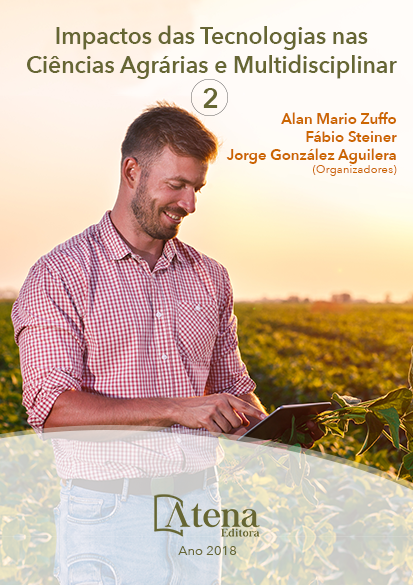
EFEITO DA SUPLEMENTAÇÃO DA PROGESTERONA NA TAXA DE CONCEPÇÃO E RESSINCRONIZAÇÃO DE RECEPTORAS DE EMBRIÕES EM VACAS NELORE
A Transferência de Embrião (TE)
e a Produção in vitro (PIV) são ferramentas
utilizadas que garante o melhoramento genético
do rebanho juntamente com a suplementação
de progesterona (P4). Assim, o objetivo desta
pesquisa foi estudar o efeito da suplementação
de progesterona (P4) no diestro na taxa de
concepção e na ressincronização de receptoras
Nelore, realizado dois experimentos. Para
tal, utilizou-se vacas multíparas de raça
nelore (n=396), onde foram divididas em dois
tratamentos: tratamento 1 (n:132) (T1), grupo
controle e tratamento 2 (n:137) aplicação do
dispositivo intravaginal de progesterona no
Dia 0 (D0) e posteriormente no Dia 9 (D9)
da receptora, após a TE. O diagnóstico de
gestação (DG) por ultrassonografia 30 dias após
a TE. Os resultados mostraram que não houve
efeito (P>0,05) da suplementação de P4 em
relação à taxa de concepção (controle 37,9%,
tratamento 39,7%). Uma segunda avaliação foi
realizada a partir dos animais com DG negativo
do experimento anterior, avaliando a hipótese
da ressincronização dos animais. Formação
do grupo controle, proveniente do resultado
negativo do T1 do experimento 1(n=69), para
formação dos animais do grupo tratamento,
foi procedente do grupo T2 do experimento
1(n=74). Receptoras que apresentaram CL,
receberam um embrião. O diagnóstico de
gestação (DG) foi realizado 23 dias após a
TE. Não houve diferença estatística entre
os dois grupos para as taxas de concepção
(T1: 22,2% vs T2: 35,7%, p>0,05). Concluise
que, a suplementação de progesterona
juntamente com a ressincronização pode ser
uma estratégica inovadora para a aplicação e
compactação dos programas atuais de TE.
EFEITO DA SUPLEMENTAÇÃO DA PROGESTERONA NA TAXA DE CONCEPÇÃO E RESSINCRONIZAÇÃO DE RECEPTORAS DE EMBRIÕES EM VACAS NELORE
-
DOI: Atena
-
Palavras-chave: IATF; Nelore; Sincronização; Suplementação; TE.
-
Keywords: IATF; Nelore; Synchronization; Supplementation; TE.
-
Abstract:
Embryo transfer (TE) and in vitro production (PIV) are tools used
to guarantee the genetic improvement of the herd together with progesterone
supplementation (P4). Thus, the objective of this research was to study the effect
of progesterone (P4) supplementation on the right at the conception rate and in the
resynchronization of Nelore recipients, conducted two experiments. Nipple multiparous
cows (n = 396) were used, where they were divided in two treatments: treatment 1 (n:
132) (T1), control group and treatment 2 (n: 137) application of the intravaginal device
of progesterone on Day 0 (D0) and later on Day 9 (D9) of the receptor, after TE. The
diagnosis of pregnancy (DG) by ultrasonography 30 days after TE. The results showed
that there was no effect (P> 0.05) of the P4 supplementation in relation to the conception
rate (control 37.9%, treatment 39.7%). A second evaluation was performed from animals
with negative DG of the previous experiment, evaluating the animal resynchronization
hypothesis. Formation of the control group, coming from the negative result of T1 of
experiment 1 (n = 69), for the formation of the animals of the treatment group, came
from the T2 group of experiment 1 (n = 74). Receivers who presented LC, received
an embryo. The diagnosis of gestation (DG) was performed 23 days after TE. There
was no statistical difference between the two groups for conception rates (T1: 22.2%
vs T2: 35.7%, p> 0.05). It is concluded that progesterone supplementation along with
resynchronization may be an innovative strategy for the application and compression
of current TE programs.
-
Número de páginas: 15
- Carina Cavichioli


